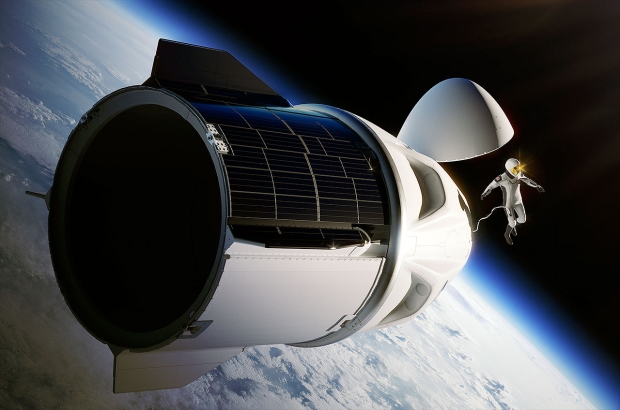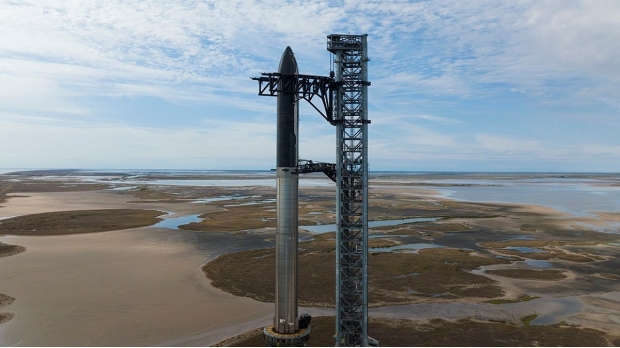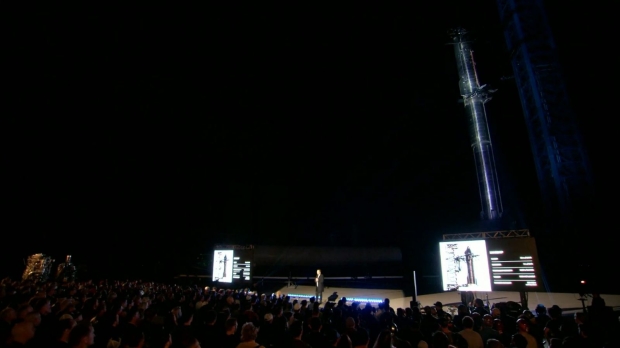Science, Space, Health & Robotics News - Page 188
The first-ever cloned black-footed ferret could save its species
Elizabeth Ann is the world's first cloned black-foot ferret, and was born on December 10th, 2020.
Elizabeth Ann made history just over a year ago as the first-ever cloned black-footed ferret. She was created from the cells of another black-footed ferret that died 35 years ago, named Willa. She was born from a surrogate ferret and, just over a year later, has achieved sexual maturity, one of the first clones of an endangered species to do so.
Now that Elizabeth Ann is of breeding age, conservation biologists hope to use her to help save the species from extinction. It will be the first time cloning has been successfully integrated into such an endeavor. Due to their small population size, the wild ferret colonies are currently suffering from inbreeding, decreasing their genetic diversity and reproductive fitness.
Continue reading: The first-ever cloned black-footed ferret could save its species (full post)
Billionaire's new 'Polaris Program' poised to set many space records
The mission is led by billionaire Jared Isaacman, founder of the online payment processing company Shift4.
After leading Inspiration4, the first all-civilian spaceflight aboard SpaceX's Crew Dragon capsule, in September 2021, Isaacman has now unveiled the Polaris Program. The program involves three commercial spaceflights, beginning with SpaceX's Dragon spacecraft and culminating in the first crewed launch of SpaceX's upcoming Starship.
The first of these flights is dubbed Project Dawn, where Isaacman hopes to achieve "the highest Earth orbit ever flown," beating the previous record of 853 miles (1,373 km) high, set in 1966 by NASA's Gemini 11 astronauts, Charles "Pete" Conrad and Richard "Dick" Gordon.
Continue reading: Billionaire's new 'Polaris Program' poised to set many space records (full post)
A SpaceX booster won't crash into the moon, but something else will
Previous identification of the WE0913A object destined to crash land into the moon as being of SpaceX origin is likely incorrect.
Astronomer Bill Gray previously suggested that a rocket stage moving through space destined to slam into the moon early next month came from a SpaceX Falcon 9 rocket, which originally launched NASA's Deep Space Climate Observatory (DSCOVR) satellite in 2015. On February 12th, Gray announced that he had made an error in his assessment and instead believes it could belong to a Chinese rocket.
The stage likely belongs to the Long March 3C rocket flown as part of China's Chang'e 5-T1 mission in October 2014. An e-mail from Jon Giorgini, an engineer at NASA's Jet Propulsion Laboratory (JPL), to Gray, led to Gray posting a correction notice on the Project Pluto website, a project which Gray manages the software to track near-Earth objects.
Continue reading: A SpaceX booster won't crash into the moon, but something else will (full post)
NASA is 'sh*tting the bed' over what Elon Musk is building
Elon Musk is on the cusp of propelling the space industry to new heights and being so close to the end, Musk's competitors are beginning to shake in their boots, according to reports.
So, what are Musk's competitors so scared of? SpaceX is nearing the end of its development for Starship, a 390-foot reusable, refuelable rocket that is capable of transporting large amounts of cargo/people to the Moon, Mars, and back to Earth. Like other SpaceX rockets such as the Falcon 9, Starship has been designed with re-usability at the forefront. SpaceX having a large reusable rocket dramatically reduces the overall cost for a launch. It thus will no doubt be the option space agencies choose over other launch vehicles that cost millions more.
For example, NASA's Space Launch System (SLS) comes with a $2 billion-per-launch price tag, which is much more expensive than Musk's $1 million-per-launch price tag. Rand Simberg, an aerospace engineer and consultant, spoke to Politico and said, "Once [Starship's] reliability is demonstrated with a large number of flights, which could happen in a matter of months, it will obsolesce all existing launch systems. If SLS is not going to fly more than once every couple of years, it's just not going to be a significant player in the future in space, particularly when Starship is flown."
Continue reading: NASA is 'sh*tting the bed' over what Elon Musk is building (full post)
NASA releases first image ever taken by James Webb Space Telescope
NASA has published a new update regarding its next-generation space telescope, the James Webb Space Telescope (JWST).
NASA has taken to its blog to update the public on Webb's development process as the next-generation space telescope nears the completion of its first of the months-long process of aligning its 18 primary mirror segments. The space agency writes that the Webb team faced two challenges, the first was making sure the observatory's NIRCam was ready for operation, and the second was preparing its 18 primary mirror segments for observing light from the same star.
The result was a mosaic image that has now become the "foundation to align and focus the telescope in order for Webb to deliver unprecedented views of the universe this summer." The space agency continued to write that the Webb team, over the coming months, will continue to optimize Webb's mirror so all of the blurry dots seen in the below image turn into one dot or one single star. For more information on this story, check out this link here.
Continue reading: NASA releases first image ever taken by James Webb Space Telescope (full post)
Scientists discover what may be the key ingredient to origin of life
Cyanide is renowned as that lethal pill that is taken by bad guys in movies once they are caught, usually by spies of secret service agents.
While the compound has notoriously got a bad wrap when it comes to public opinion, biology scientists see much more potential in it than just killing villains, as it may have been a key player in the first metabolic reactions on Earth. Chemists at Scripps Research found that cyanide has a carbon atom bonded to a nitrogen atom and performed tests that were designed to create more complex compounds that are fundamental for life to exist.
Knowing that cyanide was present in a young Earth's atmosphere allowed the researchers to devise a list that features a possible set of chemical reactions that could produce more complex organic molecules from carbon dioxide by cyanide interacting with them. This list of possible chemical reactions was tested in a lab, and according to Dr. Ramanarayanan Krishnamurthy, an associate professor of chemistry at Scripps Research and the study's lead author, "It was scary how simple it was. We really didn't have to do anything special, we mixed together these molecules, waited and the reaction happened spontaneously."
Continue reading: Scientists discover what may be the key ingredient to origin of life (full post)
Elon Musk shows how SpaceX will 'catch' the biggest rocket ever made
SpaceX has been working on Starship, the biggest and most advanced rocket ever made, for quite some time, and now SpaceX's CEO Elon Musk is showcasing how the company may catch the rocket on its descent back down to Earth.
As with all of SpaceX's rockets, they must be reusable as the reusability of its rockets is the company's main attraction as it saves millions in manufacturing rocket parts after every launch. SpaceX is already leading the reusable rocket industry with its workhorse rocket, the Falcon 9, and while that rocket can certainly get the job done when it comes to ferrying satellites and astronauts into low-Earth orbit, it doesn't quite cut it for an attempt on reaching Mars.
This is why SpaceX is building Starship, the largest and most advanced rocket ever created. Starship stacked on top of SpaceX's SuperHeavy Booster stands at a whopping 390 feet tall and will output up to a total of 7,600 tons of thrust at liftoff, which is more than double the power of a Saturn V rocket. As for how much it can carry, Starship will be able to carry between 100 and 150 tonnes to orbit and about 100 tonnes to Mars.
Continue reading: Elon Musk shows how SpaceX will 'catch' the biggest rocket ever made (full post)
Musk gives Starship update and roadmap for self-sustaining Mars city
Elon Musk gave an update on SpaceX's Starship on February 10th at SpaceX's Starbase.
Musk's presentation took place in front of a 390-foot-tall (119 meters) assembly of the Starship Ship 20 stacked atop the Super Heavy Booster 4. The update included the announcement that the future designs for the Super Heavy booster will have 33 Raptor 2 engines, up from the 29 engines currently on Booster 4.
The new engine designs will produce up to 230 tons of thrust at sea level while being made from fewer parts than Raptor 1, which can only generate up to 185 tons of thrust. Starship will be able to output up to a total of 7,600 tons of thrust at liftoff, more than double the power of a Saturn V rocket, and breaks the record for the tallest rocket built, previously held by the Saturn V, which stood 363 feet (111 meters) tall.
Continue reading: Musk gives Starship update and roadmap for self-sustaining Mars city (full post)
Robot captures scary sights from within destroyed Fukushima reactor
The robot explored the ruins of Japan's Fukushima nuclear power plant, which was destroyed in 2011.
In 2011, damage to the power plant by a massive earthquake and tsunami caused the meltdown of three of its reactor cores. The radioactive fuel within fell to the bottom of their containment vessels, complicating removal efforts. Now, an ROV-A robot operated by TEPCO has made its way into the Unit One reactor, capturing images of broken structures and mounds of what appears to be melted fuel, all submerged under highly radioactive water approximately two meters (6.5 feet) deep.
Between all three reactors are approximately 900 tonnes of melted nuclear fuel, with about 280 tonnes found in Unit One. Officials estimate the removal of nuclear fuel will take between 30 and 40 years; however, critics say that is "overly optimistic."
Continue reading: Robot captures scary sights from within destroyed Fukushima reactor (full post)
Declassified NSA document reveals how aliens might contact us
The National Security Agency's (NSA) declassified document is entitled "Communication with Extraterrestrial Intelligence."
The document begins by citing that even the National Academy of Sciences believes that extraterrestrial communication "is no longer something beyond our dreams but a natural event in the history of mankind that will perhaps occur in the lifetime of many of us." Sir Bernard Lovell, a renowned astronomer, has calculated that at least 100 million stars in our galaxy can support organic evolution.
According to Dr. Su-Shu Huang of NASA, our solar system's nearest neighbor, Alpha Centauri, houses planets too young for life to have emerged. Potential candidates would likely be Epsilon Eridani and Tau Ceti, about 11 light-years away from us, compared to Alpha Centauri's 4.3 light-years.
Continue reading: Declassified NSA document reveals how aliens might contact us (full post)











